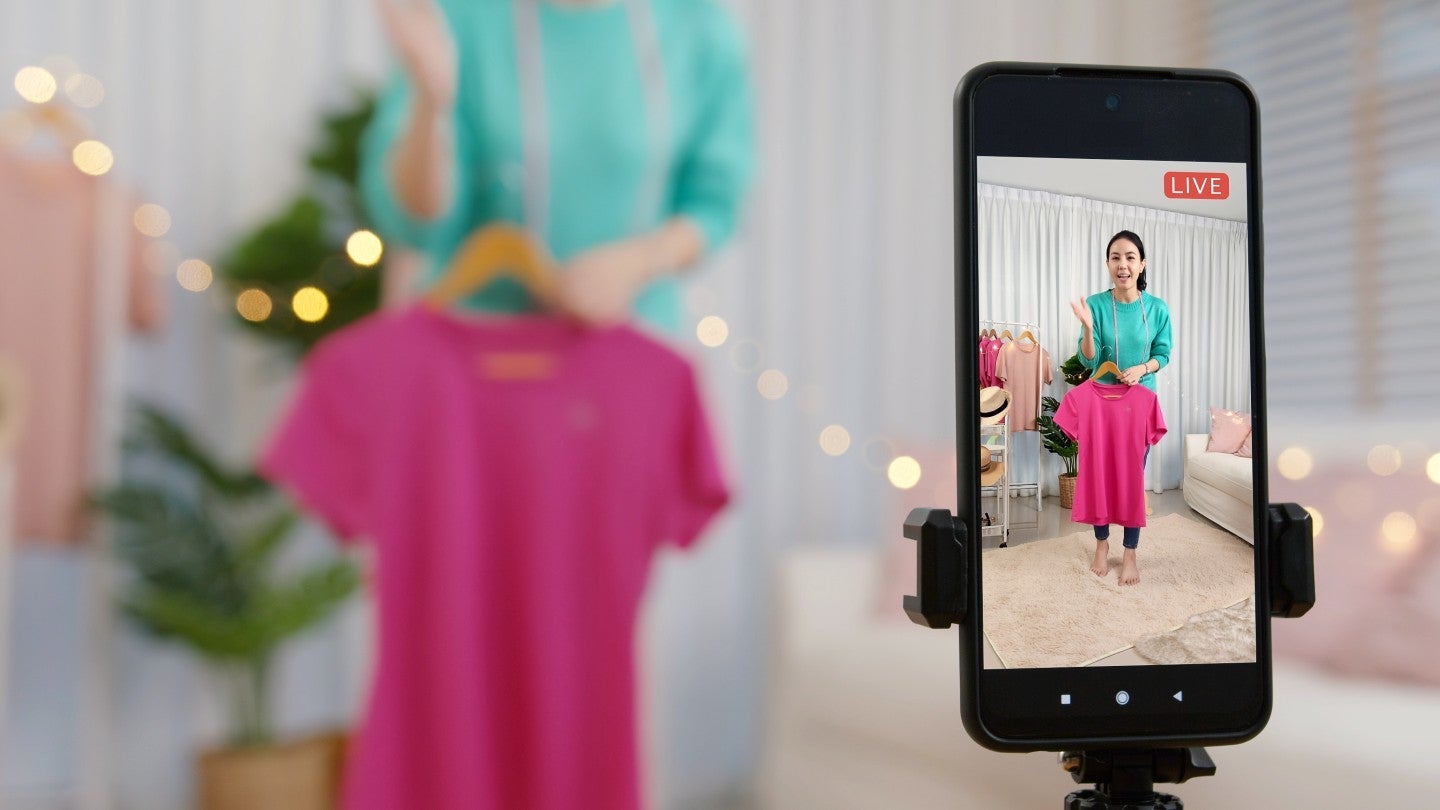
The growing trend of live shopping is helping brands to reach new audiences and sell their products in real-time.
Just as live shopping channels were an innovation for the retail and apparel sectors as television matured, offering an alternative to in-store shopping, social media and live streaming are now enabling another new way of engaging with consumers.
What is live shopping?
Live shopping takes the form of live video streams via which sellers display and demonstrate products while answering questions from potential buyers. There are countless platforms that can be used for this, but among the most popular are TikTok, Facebook, Alibaba and Douyin.
All sorts of products can be sold via live shopping, but common items include clothing, jewellery and make-up.
Often, there are promotions or discounts offered that are exclusive to that particular livestream, creating a sense of urgency and encouraging consumers to purchase instantaneously.
While the key point of differentiation between in-store shopping experiences and online has been experiential, live shopping brings e-commerce the closest it can get to an in-store shopping experience. The personal connection to the seller and the ability for storytelling can help to drive sales. Those leading a live shopping stream are able to contextualise the item, showing and explaining its use in real life.
How well do you really know your competitors?
Access the most comprehensive Company Profiles on the market, powered by GlobalData. Save hours of research. Gain competitive edge.

Thank you!
Your download email will arrive shortly
Not ready to buy yet? Download a free sample
We are confident about the unique quality of our Company Profiles. However, we want you to make the most beneficial decision for your business, so we offer a free sample that you can download by submitting the below form
By GlobalDataLive shopping offers better engagement than traditional e-commerce marketing techniques, which means that consumers can feel more comfortable spending on items as their queries and concerns can be responded to with immediacy.
The growth of live shopping
Of the typical audiences, GlobalData senior apparel analyst Pippa Stephens explains: “This way of shopping is most popular among younger shoppers, as they are most tech-savvy and spend more time online, while they are also more inclined to make impulse fashion purchases to keep up with trends.”
The collective nature of live shopping can also prompt consumers to purchase if they see others on the livestream doing so. The prestige of the influencer leading the livestream can also be a powerful factor in driving sales.
Live shopping has captured large audiences in China and Asia in particular, with wildly popular platform slike Alibaba and Douyin spearheading the trend, but the pandemic also accelerated its uptake in Western countries.
Stephens notes, though: “After the return to normality, its popularity stepped back. While some Western retailers are still hosting live shopping events, the channel only comprises a small proportion of sales overall.”
While live shopping can never be a complete replacement for physical stores, it allows brands to reach consumers in areas where they do not have a physical presence.
Social media and live shopping
The use of social media platforms for live shopping contributes to a broader trend in the apparel sector of globalised retail. Now more than ever before brands can reach consumers anywhere.
TikTok is particularly seeking to push live shopping in Western markets, with AI reportedly being developed to identify products in videos and suggest similar products on TikTok Shop.
While some luxury brands are dissuaded from entering the live shopping trend, several high-profile brands have started to hold live shopping events. These include Canadian shoe company Aldo, consumer electronics brand LG, luxury US department store Nordstrom and fashion brand Tommy Hilfiger.







